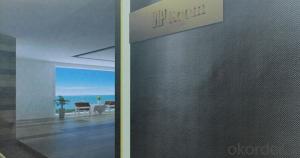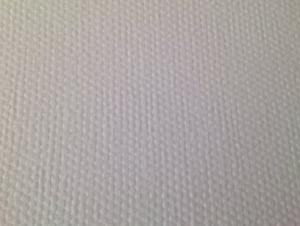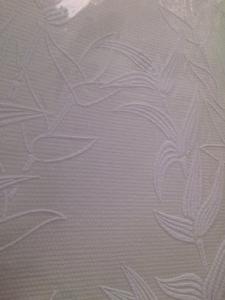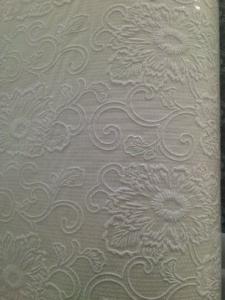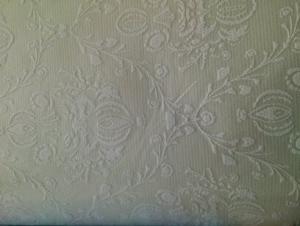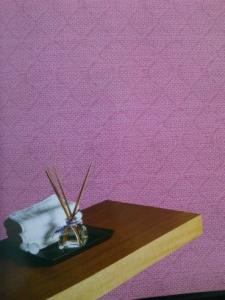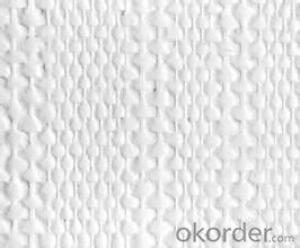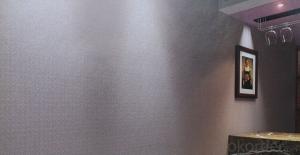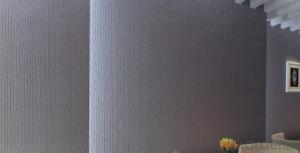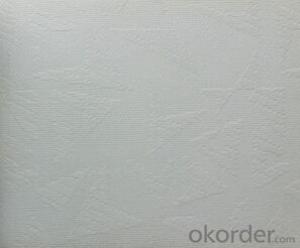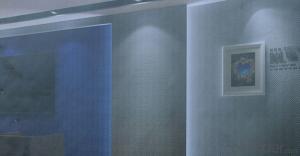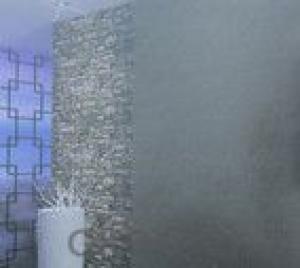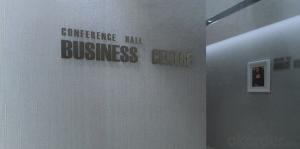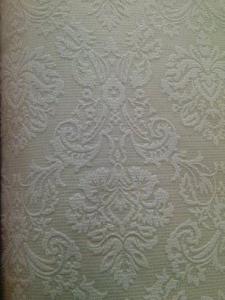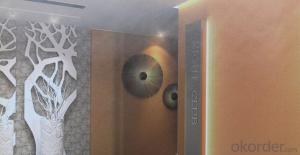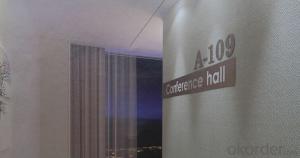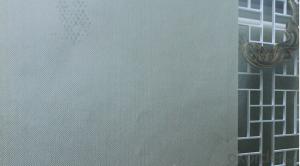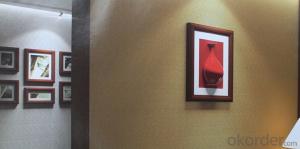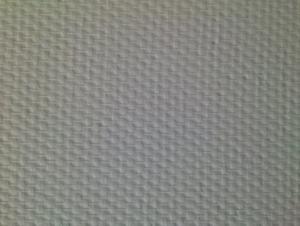Fiberglass Wallcovering Cloth - Various Colors & Patterns 81201
- Loading Port:
- Shanghai
- Payment Terms:
- TT OR LC
- Min Order Qty:
- 100 m²
- Supply Capability:
- 100000 m²/month
OKorder Service Pledge
OKorder Financial Service
You Might Also Like
Fiberglass Wallcovering Cloth Various Colors&Pattern 81201
Specification of Wallcovering Cloth
.Environment-friendly
.Flame retardent
.Air permeability
.Waterproof
.Anti-corrosion
.Imcomparable strength
.Abundant patterns and colors
.Long life time
Packing Details
.Width:1m
.Length:25/50m
.Each roll of wallcovering cloth is wrapped in a shrinking polythene film,then put in carton
Introduction of wallcovering Cloth
Fiberglass wallcovering cloth,that combines the versatility of paint,from latex to epoxy,with the
strength and benefits of woven fiberglass textile yarns to meet the most demanding wall finish
requirments.Fiberglass textile yarns,as a kind of natural materials,are woven into various textures
and patterns and then treated with a natural starch binder for dimensional stability during the hanging
process.
Compared with traditional wall papers,fiberglass wall covering cloth has the following advantages:
Environment friendly,Flame Retardant,Air Permeability,Shock Resistance,Waterproofing,Anti-corrosion,Abundant Colors&Patterns.
Product Show
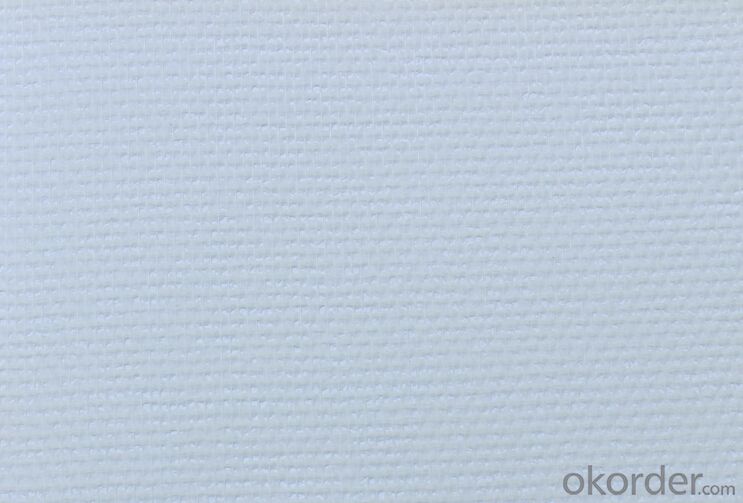
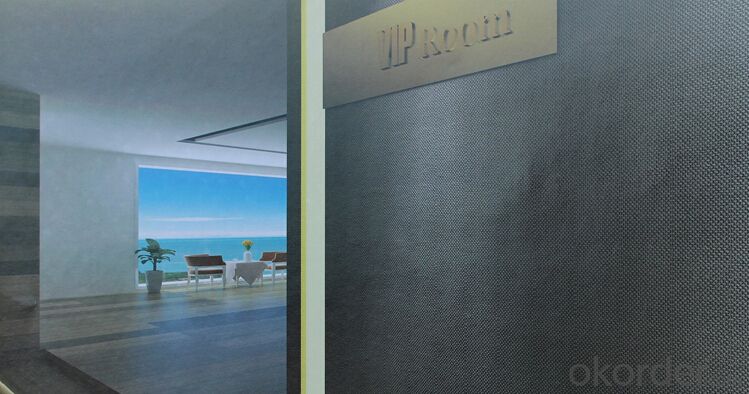
Application of Wallcovering Cloth
As a high-tech indoor decorating material,fiberglass wallcovering cloth is widely used in resident homes,
offices and shops and even cinemas,theatres,hotels and hospital faclilties,air ports,office buildings,shopping centers and schools.
Test Report
Our product has passed test by SGS as follows:
EN 12956:for determination of dimensions,straightness,spongeability and washability.
EN 12149:for determination of magration of heavy metals and certain other elements,of
vinyl monomer and of formaldehyde release.
EN 20105-B02:light solidity.
Our products had passed test of Fire Retardancy M1 Class by LINE
- Q: Does fiberglass wallcovering cloth require any special maintenance?
- No, fiberglass wallcovering cloth does not require any special maintenance. It is a durable material that is resistant to fading, stains, and moisture. Regular maintenance includes simply wiping it down with a damp cloth or sponge to remove any dirt or dust. It is important to avoid using abrasive cleaners or scrub brushes as they can damage the surface of the wallcovering. Additionally, fiberglass wallcovering cloth is known for its longevity and can withstand normal wear and tear without requiring any special care.
- Q: Does fiberglass wallcovering cloth have any specific installation instructions for corners and edges?
- Yes, fiberglass wallcovering cloth typically has specific installation instructions for corners and edges. It is recommended to use a sharp utility knife to cut the cloth to size and ensure a precise fit around corners and edges. Additionally, the cloth should be overlapped at corners and edges to create a seamless appearance. Following the manufacturer's instructions and guidelines will ensure a proper installation.
- Q: Can fiberglass wallcovering cloth be used in exterior architectural features or elements?
- Exterior architectural features or elements can indeed incorporate fiberglass wallcovering cloth. This material, known for its durability and resistance to weather conditions, is ideal for outdoor use. It is commonly employed in facades, cladding, and decorative components, as it can withstand harsh outdoor conditions. To strengthen and protect the fiberglass cloth from moisture, UV radiation, and other environmental factors, it is typically applied over a substrate and coated with resin. This combination creates a sturdy and long-lasting exterior surface that resists cracking, fading, and deterioration. Furthermore, fiberglass wallcovering cloth can be molded or shaped into various forms, allowing for design versatility and customization. Overall, this material is a reliable and practical choice for enhancing the aesthetic appeal and durability of exterior architectural features.
- Q: Can fiberglass wallcovering cloth be used in exterior insulation systems?
- Yes, fiberglass wallcovering cloth can be used in exterior insulation systems. It provides excellent durability, insulation, and protection against moisture, making it suitable for outdoor applications.
- Q: Can fiberglass wallcovering cloth be used in retail or commercial office spaces?
- Fiberglass wallcovering cloth is an excellent option for retail or commercial office spaces. This material is both durable and versatile, making it perfect for areas with high foot traffic. It is resistant to wear and tear and can withstand heavy use, making it ideal for commercial spaces where customers or employees are constantly coming and going. Furthermore, fiberglass wallcovering cloth has the added benefit of being fire-resistant, which is crucial for safety in commercial buildings. It is also available in a wide range of colors and patterns, allowing for customization and the creation of a professional and attractive environment. All in all, fiberglass wallcovering cloth is a great choice for retail or commercial office spaces due to its durability, fire resistance, and aesthetic appeal.
- Q: Does fiberglass wallcovering cloth have any specific installation requirements for humidity or moisture levels?
- Yes, fiberglass wallcovering cloth typically requires specific installation requirements in terms of humidity and moisture levels. It is important to ensure that the surface where the cloth is being applied is dry and free from moisture, as excessive humidity or moisture can affect the adhesive and lead to improper adhesion or bubbling. Additionally, maintaining a controlled humidity level during the installation process can help to ensure a successful and long-lasting application of fiberglass wallcovering cloth.
- Q: Is fiberglass wallcovering cloth suitable for use in gyms or sports facilities?
- Yes, fiberglass wallcovering cloth is suitable for use in gyms or sports facilities. Fiberglass wallcovering cloth has several properties that make it an ideal choice for these types of environments. Firstly, fiberglass is a durable material that can withstand heavy use and high levels of activity. Gyms and sports facilities are often subjected to intense physical activity, which can lead to wear and tear on the walls. Fiberglass wallcovering cloth is designed to be resistant to scratches, impacts, and abrasions, ensuring that it can withstand the demands of these environments. Secondly, fiberglass wallcovering cloth is easy to clean and maintain. Gyms and sports facilities are prone to dirt, sweat, and other types of stains. Fiberglass wallcovering cloth is washable and can be easily cleaned with mild detergents. This makes it an ideal choice for maintaining a clean and hygienic environment in gyms and sports facilities. Additionally, fiberglass wallcovering cloth is also resistant to moisture and humidity. Gyms and sports facilities often have high levels of humidity due to activities that involve sweating. Fiberglass wallcovering cloth does not absorb moisture, preventing the growth of mold and mildew, which can be a common problem in these environments. Furthermore, fiberglass wallcovering cloth is available in a variety of designs and patterns, allowing for customization to fit the aesthetic requirements of the gym or sports facility. It can be easily painted or digitally printed to display logos, team colors, or motivational messages. In summary, fiberglass wallcovering cloth is a suitable choice for use in gyms or sports facilities due to its durability, ease of maintenance, resistance to moisture, and customizable design options.
- Q: Can fiberglass wallcovering cloth be used in exterior facade elements or cladding?
- Exterior facade elements and cladding can incorporate fiberglass wallcovering cloth for enhanced performance. Renowned for its durability and versatility, fiberglass cloth is resistant to moisture, chemicals, and extreme temperatures. Its exceptional qualities render it ideal for withstanding severe weather conditions prevalent in exterior applications. By utilizing fiberglass wallcovering cloth, the strength and resilience of building exteriors can be reinforced, providing additional protection against impact, cracks, and various forms of damage. Moreover, it contributes to achieving a uniform and sleek appearance on the facade, effectively enhancing the building's aesthetic appeal. Additionally, fiberglass cloth is lightweight and can be effortlessly installed, making it a convenient choice for exterior cladding. It can be directly applied to diverse surfaces such as concrete, wood, metal, and even existing walls, making it adaptable to different architectural designs and building types. However, it is crucial to acknowledge that the success of employing fiberglass wallcovering cloth in exterior facade elements or cladding is contingent upon proper installation and regular maintenance. To ensure suitability for the intended application and compliance with building codes and standards, it is advisable to seek guidance from professionals or manufacturers.
- Q: Can fiberglass wallcovering cloth be used in conjunction with tile or other wall materials?
- Fiberglass wallcovering cloth is a versatile material that can be used with different wall materials, including tile. It can be installed on various surfaces like drywall, plaster, wood, and even tile. This material provides a smooth and durable surface that can be easily painted or wallpapered. When used with tile, it acts as a backing to prevent any cracking or damage to the tile installation. It adds strength and stability to the wall, ensuring that the tile remains securely in place. Moreover, fiberglass wallcovering cloth can also be used with other wall materials like wallpaper or paneling to increase durability and protect the underlying surface. Overall, fiberglass wallcovering cloth is a compatible material that can effectively enhance the aesthetic appeal and longevity of the wall surface when used with tile or other wall materials.
- Q: Can fiberglass wallcovering cloth be used in conjunction with decorative shelving or displays?
- Indeed, decorative shelving or displays can be paired with fiberglass wallcovering cloth. This adaptable and resilient material can be utilized to create a sleek and uniform surface on walls and various other surfaces. Its versatility extends to the ability to be painted or textured to match any desired aesthetic. When combined with decorative shelving or displays, the fiberglass cloth serves as a flawless backdrop that elevates the overall visual appeal. Moreover, the robustness and endurance of fiberglass make it an ideal choice for bearing the weight of shelving or displays, guaranteeing a secure wall-mounted installation.
Send your message to us
Fiberglass Wallcovering Cloth - Various Colors & Patterns 81201
- Loading Port:
- Shanghai
- Payment Terms:
- TT OR LC
- Min Order Qty:
- 100 m²
- Supply Capability:
- 100000 m²/month
OKorder Service Pledge
OKorder Financial Service
Similar products
Hot products
Hot Searches
